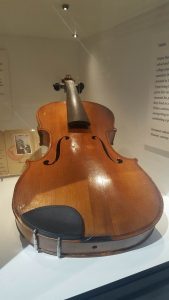The FHM Celebrates #MusFavObject Day!
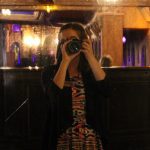 Kristen Wright, The Florida Holocaust Museum’s Writer and Digital Content Manager
Kristen Wright, The Florida Holocaust Museum’s Writer and Digital Content Manager
Today is #MusFavObject Day! In honor of Museum Favorite Object Day, please enjoy my Top 5 favorite objects at The Florida Holocaust Museum.
Garments (from In Search of the Lost Object)
Gabrielle Rossmer was born in Bamberg, Germany. Her father was arrested the morning after Kristallnacht and sent to Dachau concentration camp. After five weeks he was released and soon after, the family boarded a ship for New York. The family left behind Rossmer’s grandparents who were murdered.
“Garments, hanging cloth sculptures that are twice life-sizes, [is an evocation] of the human form and style that are open to the interpretation of the viewer.” (Rossmer).
Garments is from the artist’s conceptual installation In Search of the Lost Object, which tells her family’s history. They are a larger-than-life version of her Revenants which are included in the installation and represent ghosts who remain in thought but are not living. There are means to evoke images of the artist’s grandparents who were in the shirt business.
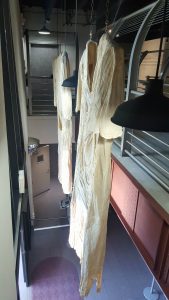
Camera
With this camera, Sam Schryver took clandestine photos like this one of a poster for the anti-Semitic propaganda film, “Der ewige Jude” (the Eternal Jew).
Schryver, born in Amsterdam, Holland, joined the Dutch Underground immediately after German occupation. As part of the Underground, he helped forge passports and identification cards.
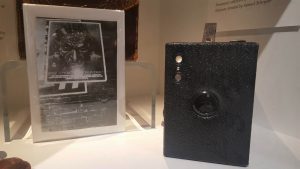
Letter
This letter was written by Jerry Rawicki to his sister who was living with an assumed identity as a gentile. By the time the letter was written, Jerry had escaped the Warsaw Ghetto and was working and living on a farm, also with an assumed identity.
In the letter, he describes their plans for when his sister visits him, but also offers a warning:
“PS: What I wrote to you about coming here is not unfounded so please do not consider it lightly and follow my advice. My fear is justified and I would have to explain a lot of things first.”
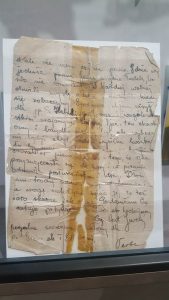
Handmade Sarongs
These sarongs were hidden by a Cambodian survivor during the reign of the Khmer Rouge. Because of their sentimental value, the sarongs were hidden, one in the thatched roof of a hut; the other was put inside a hollowed out piece of bamboo and buried in the countryside. Having such clothing and possessions were a sign of privativism. Under the Khmer Rouge, everyone was expected to dress alike (black peasant garb usually with a checkered scarf and sandals made out of tire) and a forge a “progressive consciousness.” The sarongs would have been a sign of a “regressive consciousness” and thus, potentially, a cause for execution.
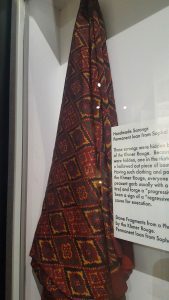
Violin
Walter Heuman began playing the violin in high school and continued to play throughout his college years, residency, and practice as an ENT specialist. Walter and his wife Ruth were arrested in 1942, and interned at several camps. Upon being liberated from Dachau, Walter was given this violin by an American GI and resumed his playing. After reuniting with Ruth, they lived in DP camp in Kempton, Germany. Walter continued playing the same violin after immigrating to the United States in 1947, and establishing a practice in Pavilion, New York.
